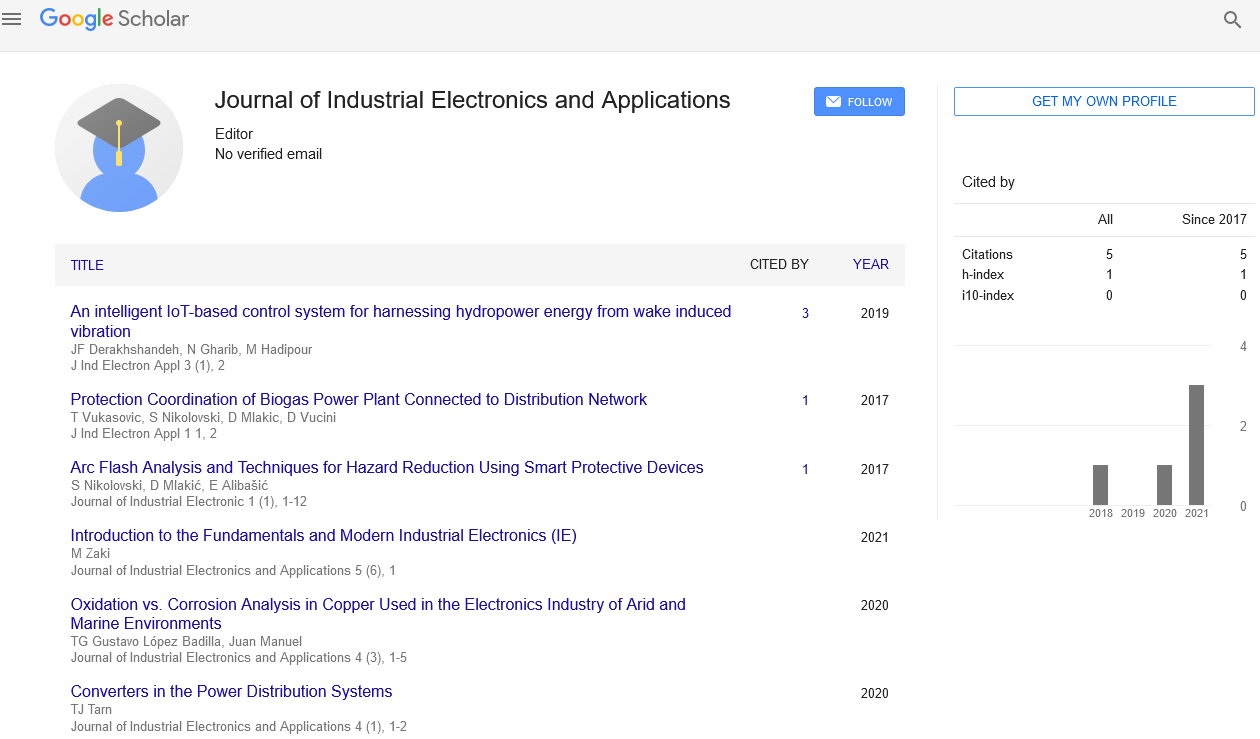Perspective, J Ind Electron Appl Vol: 5 Issue: 6
Rise of AI in Recent Years Refer to Service and Industrial Robots
*,
Department of Electronic Engineering, Chaitanya Institute of Technology, Visakhapatnam, India
Corresponding Author:
Zaniab Dhubey
Department of Electronic Engineering, Chaitanya Institute of Technology, Visakhapatnam, India
E-mail: dhubeysjaoph@gmail.com
Abstract
Keywords: Automotive Technology, Computational Intelligence, Control Systems and applications, Electrical Machines and Drives, Factory Automation
Description
The value savings arising from implementing energy saving initiatives across multiple motors is immense. The term ‚??drive‚?? is employed to mean several things in trade, as well as being employed as a generic word for motors, for drive trains (such as gearboxes or block systems) and for motor controllers. Electrical motors are offered in standardized sizes and power ratings generally starting from 10 W to many MW. There are differing types of motor, every of that has completely different characteristics, benefits and applications.
Electric motors are battery-powered by DC sources, like from batteries or rectifiers or by electrical energy (AC) sources, like an influence grid, inverters or electrical generators.
Electric motor is also classified by issues like power supply sort, construction, application and sort of motion output. They‚??ll be battery-powered by AC or DC, be brushed or brushless, single-phase, two-phase or three-phase axial or radial flux and will be cool or liquid-cooled.
Induction motors embrace squirrel-cage and wound-rotor varieties. Induction motors consider a magnetic flux to transfer magnetism energy to the rotor. The elicited currents within the rotor produce a magnetic flux that interacts with the mechanical device field. The speed of the rotor‚??s magnetic flux is slightly but that of the mechanical device (this distinction is that the slip) because the load on the motor will increase, the slip conjointly will increase. The full-load speed is often shown on the motor name plate. Squirrel-Cage motors are the foremost common kind of industrial motor is that the squirrel-cage induction motor. The name derives from the similarity between the rotors and also the kind of wire wheel unremarkably found in pet cages at the time this motor was initial developed. Rotor bars are either welded or solid to 2 circular finish rings, forming a circuit with little resistance [1].
DC drives are wide employed in applications requiring adjustable speed, smart speed regulation and frequent beginning, braking, and reversing. Though since late sixties, its being foreseen that AC drives would replace DC drives; even these days the variable speed applications are dominated by DC drives attributable to lower price, dependableness and easy management. Series motors are appropriate for applications requiring high beginning force and significant overloads. Since force is proportional to face of the coil current, for a given increase in load force the rise in coil current is a smaller amount just in case of series motor as compared to a singly excited motor wherever force is proportional to solely coil current. Therefore throughout significant overloads power overload on the supply power and thermal overload on the motor are unbroken restricted to cheap tiny values.
Power issue isn't a live of potency. It‚??s a magnitude relation of real power, in total kilowatts to total apparent power, in kV amps. If a load attracts reactive power, the facility issue is alleged to be "lagging" Most electrical motors have a insulation power issue. The operation of electrical systems with low power issue leads to reducing the power carrying capability of the facility provide system [2]. As associate degree incentive for patrons to control at high power factors, utilities levy power issue penalties to customers whose overall power issue falls below sure levels. The distinction between the 3 aspects of power, kilowatts, kilovolt-amps and kilovolt-amps reactive, is important to associate degree understanding of power issue. Helpful mechanical work derives from "real power," the energy consumed by the load. Real power is expressed in kilowatts.
Elementary Motor-Stationary Conditions
Motor consists of a conductor of active length which can move horizontally perpendicular to a magnetic flux density B. It is assumed that the conductor has a Resistance (R), that it carries a D.C. current (I), and that it moves with a Velocity (v) in a direction perpendicular to the weld and the current attached to the conductor is a string which passes over a pulley and supports a weight: The tension in the string acting as a mechanical ‚??load‚?? on the rod. Friction is assumed to be zero [3-5]. We need not worry about the many difficult practicalities of making such a machine, not least how we might manage to maintain electrical connections to a moving conductor. The important point is that although this is a hypothetical set-up, it represents what happens in a real motor, and it allows us to gain a clear understanding of how real machines behave before we come to grips with much more complex structures. We begin by considering the electrical input power with the conductor stationary. For the purpose of this discussion we can suppose that the magnetic field (B) is provided by permanent magnets. Once the Weld has been established, no further energy will be needed to sustain the field, which is just as well since it is obvious that an inert magnet is incapable of continuously supplying energy. It follows that when we obtain mechanical output from this primitive ‚??motor‚??, none of the energy involved comes from the magnet. This is an extremely important point: The Weld system, whether provided from permanent magnets or ‚??exciting‚?? windings, acts only as a catalyst in the energy conversion process, and contributes nothing to the mechanical output power.
Variable Speed Drives (VSDs)
VSDs are not helpful in variable force load applications (such as fans and pumps) wherever the output is controlled by different means that like water or outlet strangling, or damper adjustment. As an example, savings of up to five hundredth of energy use are possible by reducing the fan or pump motor speed by 200%.
 Spanish
Spanish  Chinese
Chinese  Russian
Russian  German
German  French
French  Japanese
Japanese  Portuguese
Portuguese  Hindi
Hindi 